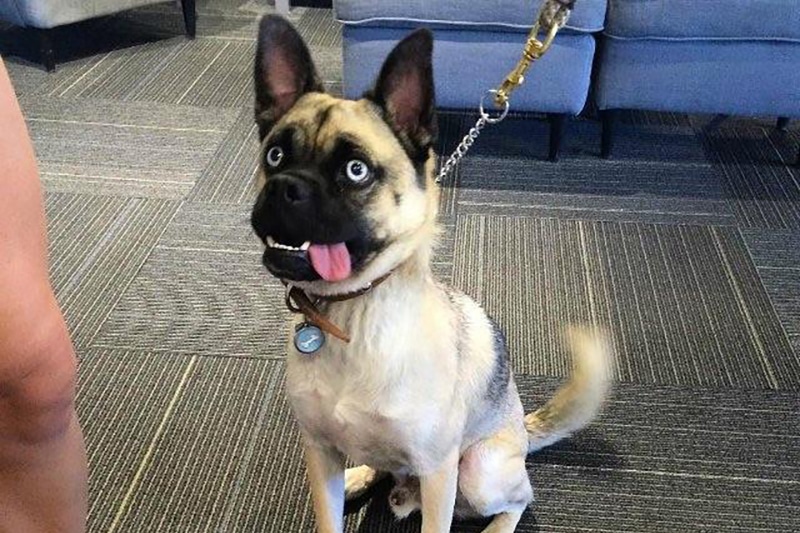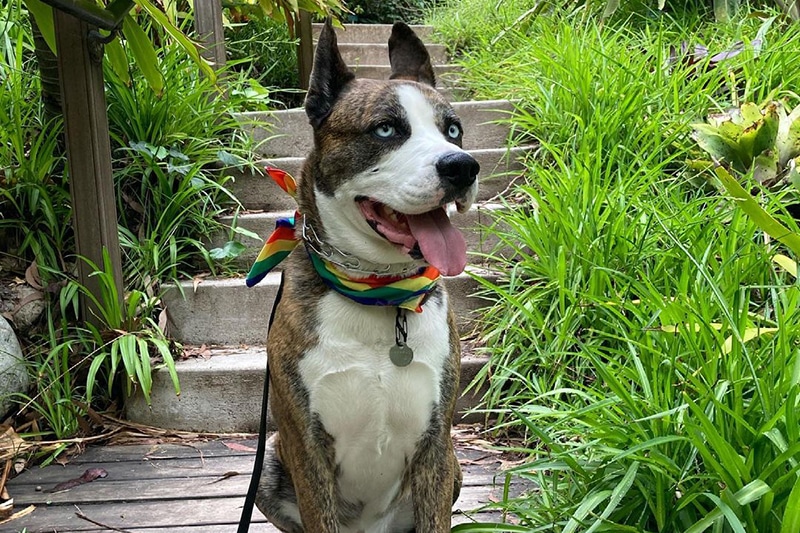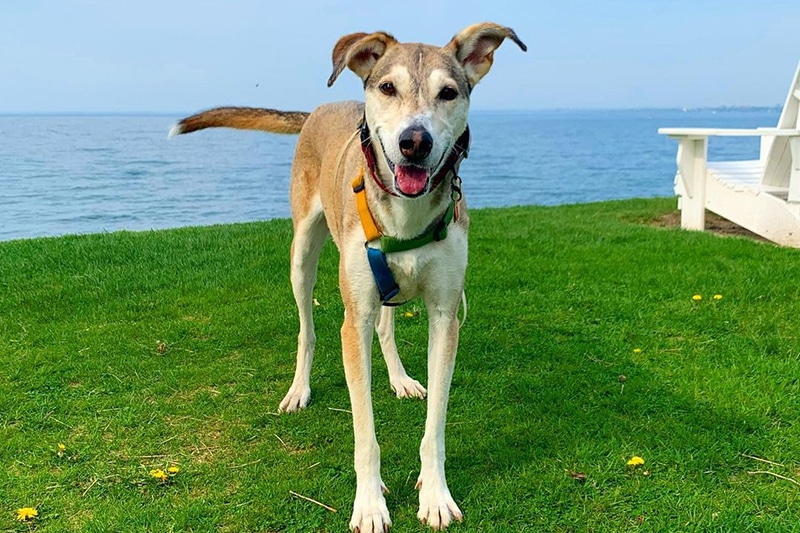If you’ve always wanted a husky in a smaller package, then the Yorkie Husky mix may well be the dog for you. These adorable little short-statured dogs are perfect for most family units and good with most people and other dogs, despite their terrier-esque nature. While you won’t see this dog everywhere, the gentle nature of this small dog is a hit among almost any owner type.
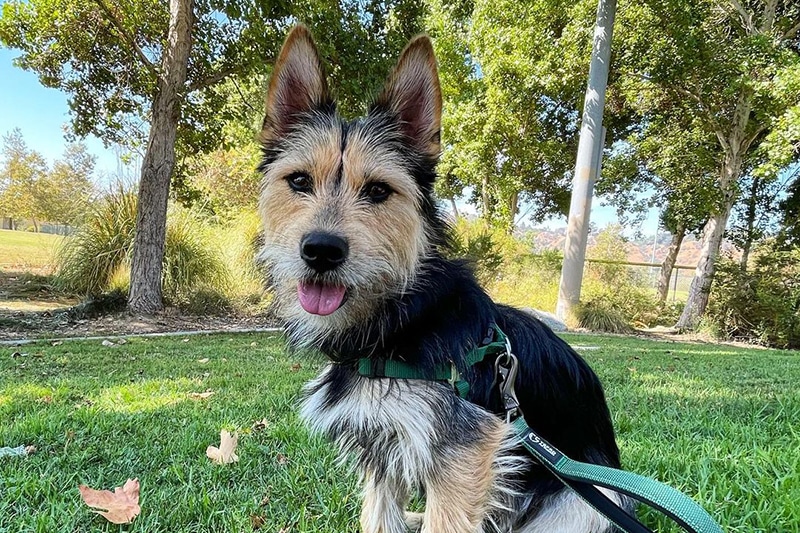
Yorkie Husky Mix – At a Glance
| Weight: | 20-35 pounds |
| Height: | 13-18 inches tall |
| Lifespan: | 12-14 years |
| Coat Colors: | White and either red, tan, black, agouti, sable, or grey coating |
| Temperament: | Friendly, loyal, energetic, social |
| Most Suitable For: | Active owners, couples, families with children |
What Does a Yorkie Husky Mix Look Like?
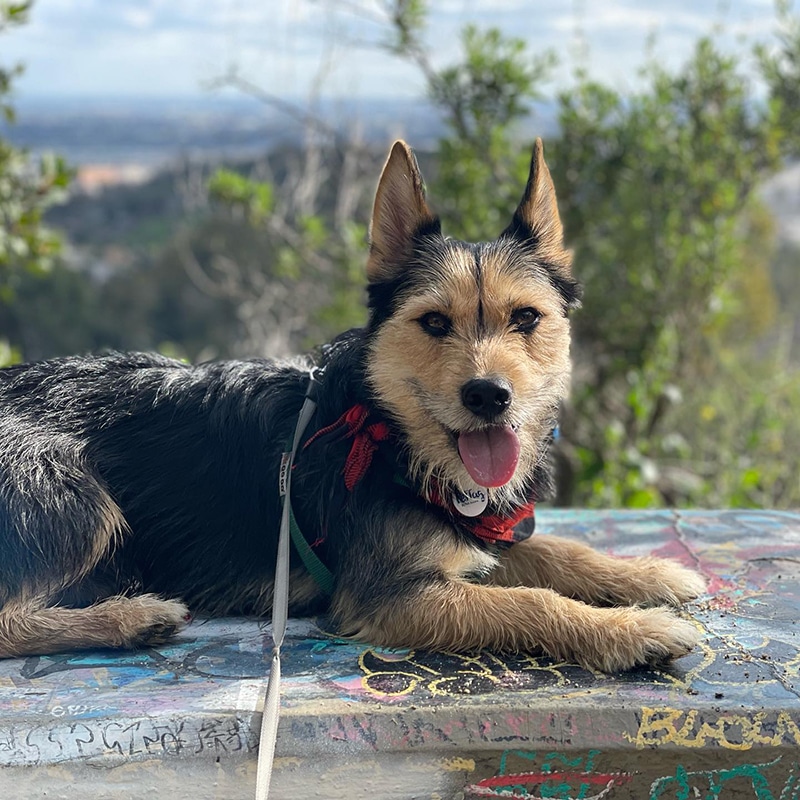
The Yorkie Husky borrows plenty of its appearance from both parent genes. The small stature, terrier nature of the dog comes from the Yorkshire Terrier gene, meanwhile the double-coat and often blue or brown eyes comes from the Husky. You can expect your Yorsky to have pointy ears and a long snout if it inherits its genes from the Husky. Meanwhile, if the physical-appearance genes are from the Yorkie, you might get a short-statured dog with V-shaped ears and a medium-short snout.
Though often double-coated, it’s worth noting that these mixes are not hypoallergenic.
Are you looking for a way to treat your furry friend? Sign up for our newsletter for a chance to win a free month of Barkbox!
The History of the Yorkie Husky Mix:
While the history of the Husky Yorkie mix is difficult to find out precisely, because of the designer nature of the breed, we can surmise that whoever first produced a “Yorksky” was probably looking to tie together the beauty of the Husky with the terrier nature of the Yorkshire Terrier, creating a fast, energetic dog – given that the Yorkie/Husky mix isn’t necessarily well known for it’s hunting prowess, we can surmise that they were designed as house pets.
Yorkie History
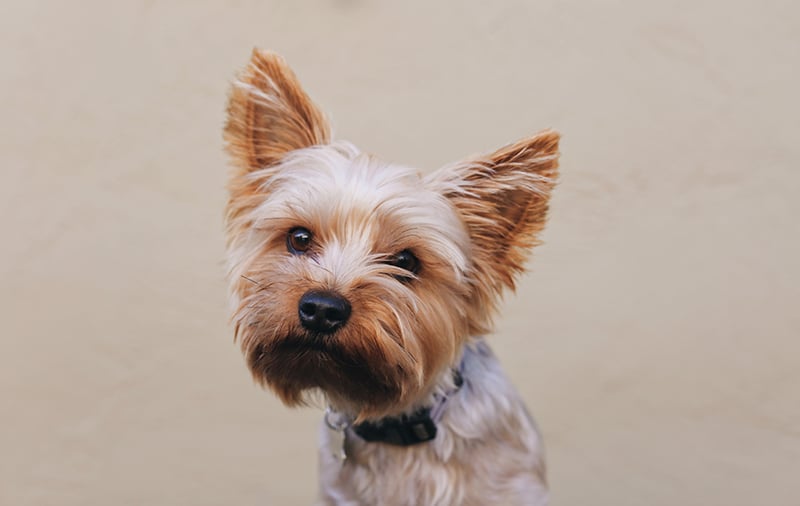
“Yorkie” is short for “Yorkshire Terrier” – this is a type of terrier that originated in Yorkshire, England in the early 19th century, by Scottish weavers who’d moved to Yorkshire during the Industrial Revolution.
The Yorkie was primarily developed as a factory dog, being small enough to hunt and kill mice in the factories during the Industrial Revolution. Known for their tenacity and fearlessness, these dogs would transition from working dogs to household pets as the centuries wore on, though never really losing their terrier nature.
How Popular Are Yorkies in the United States?
By the late 19th century, precisely 1872, the United States, a newly fledgling independent country had begun to accept more and more immigrants from the Old Country and Yorkshire settlers from England more often than not brought over their dogs. This led to the introduction of the Yorkie into American life. Today, the AKC ranks the Yorkie as the thirteenth most popular dog in the country as of 2021.
Who Are Yorkies a Good Dog For?
Yorkies are generally great dogs for just about anyone – with the possible exception of the elderly. They’re loving and affectionate while being energetic and excitable. Lightweight and small, they don’t take up a lot of housing real estate and are generally low-maintenance dogs, despite their energetic nature.
How Did Yorkies Come About?
Yorkies were developed by Scots, who had moved to the English county of Yorkshire during the Industrial Revolution. These dogs were initially bred as hunters of mice in factories during the Revolution, as fearless rodent catchers, quick on their feet. They first came to America in the late 19th century.
When Did We First Cross-Breed Yorkies?
The history of cross-breeding Yorkies is a little spotty, because of the nature of the original breed. However, we can surmise that those who did crossbreed their Yorkies will have done so perhaps seeking a bigger dog, maybe one with a temperamental opposite to the Yorkie, in order to bring a calming, more docile dog to the household.
Popular Yorkie crossbreeds include:
- Pitbull Yorkie Mix (Yorkie Pit)
- Yorkie Chihuahua Mix (Chorkie)
- Yorkie Poodle Mix (Yorkipoo)
- Yorkie Pomeranian Mix (Yorkie Pom)
- Yorkie Shih Tzu Mix (York Shih)
Husky History
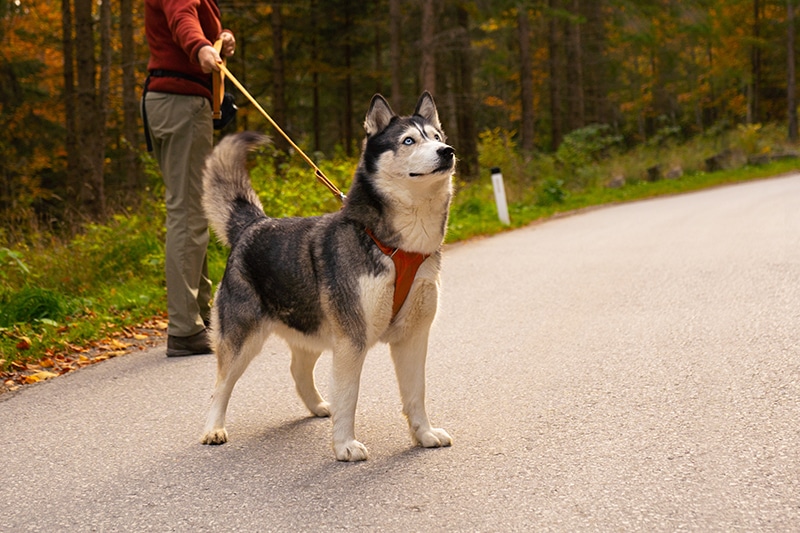
The Husky has its roots in Siberia, where the dogs were bred as sledge-pulling dogs, hunting companions and guard dogs of the Chukchi people of eastern Siberia. They were actively imported to Alaska during the late nineteenth and early 20th centuries, and used as sled dogs for transporting gold miners to the Yukon. Later, Huskies would become synonymous with a transnational sled dog race known as the Iditarod.
How Popular Are Huskies in the United States?
Siberian Huskies frequently score highly in popularity with Americans, probably because of their relatively gentle nature and despite their high-octane energy, they can be a great family asset and can be relatively aloof once exhausted. They rank inside the top 20 of last year’s rankings of the AKC’s most popular dogs!
Who Are Huskies A Good Dog For?
Huskies are a great dog choice for anyone with plenty of energy, space and time to devote to them. While they’re OK on their own, they do require a lot of space to move around in and will also require plenty of exercises – it’s in the genes! For this reason, they’re not a great fit for anyone renting a small apartment, or perhaps an elderly person without the energy or time necessary to properly exercise them.
How Did Huskies Come About?
Unfortunately, much of the history of the Siberian Husky is unknown, lost to the howling winds of the Eastern Russian tundra. However, they were originally imported to Alaska to help transport gold miners to the Yukon and then became sled dogs for racing and transportation of medicines across the state and northern regions of Canada.
When Did We First Cross-Breed Huskies?
Cross-breeding of the Siberian Husky occurred pretty much right after their arrival in Alaska – this is where your Alaskan Husky comes from, but they have since been crossbred with many other dogs including Labradors, the Yorkie, and others. The Husky is a working dog that can be bred successfully across many different other types, so, depending on what the breeder is looking for, you may find some fairly strange Husky crosses out there.
Some popular Husky crosses include:
- Corgi Husky Mix (Corgsky)
- Husky Bulldog Mix (Bull Husky)
- Greyhound Husky Mix (Greysky)
- Shiba Inu Husky Mix (Husky Inu)
- Great Dane Husky Mix (Great Danesky)
What is the Temperament of the Yorkie Husky Mix?
These playful, affectionate, energetic and outgoing dogs make them the perfect fit for many families or active owners. While not needing quite as much running as their Husky genetics might have you thinking, mostly due to their stature, the Yorkie Husky mix will appreciate a good walk as much as any dog. They’re said to be fantastic with children and also do well around other dogs, with appropriate socialization and training.
Are Yorkie Husky Mixes Friendly?
Yes, in general, the Husky Yorkie mix is a very friendly dog. Both of their parent genes are also particularly friendly animals, so this isn’t surprising.
Are Yorkie Husky Mixes Easy to Train?
Given that both parent dogs tend to be fairly obedient dogs, with the Yorkie being slightly more stubborn, perhaps, than the Husky, you should expect this mix to be fairly easy to train. But don’t hesitate to take them to a professional dog trainer, if you find yourself struggling.
How Much Can Yorkie Husky Mixes Weigh?
Yorkie Husky mixes tend to weigh in at around 20-35lbs.
How Tall Can Yorkie Husky Mixes Get?
Given that they tend to adopt their Yorkie height genes, don’t expect your mix to get anywhere above 20 inches tall, with an average of around 13-18 inches.
Similar Sized Breeds
Given that both dogs mix well with dogs of their own sizes, a similar-sized breed to the ‘Yorksky’ could well be any terrier mix with any smaller-sized dog, such as the Poodle/Wheaton Terrier (otherwise known as a “Whoodle”), the Airedale/Poodle hybrid, or the “Bullboxer” – an American Pit Bull Terrier/Boxer mix.
Does a Yorkie Husky Mix Shed?
Yes! Given their double-coated nature, you can expect your Yorkie Husky mix to shed heavily during season shifts and moderately throughout the year. Buy a good comb and frequently brush your “Yorkski” to ensure their coat remains unmatted.
How Much Exercise Does a Yorkie Husky Mix Need?
These excitable smaller dogs do require a fair bit of exercise. At least thirty minutes to an hour’s walk in a dog park every day, or a good long hike on the weekends, if you can’t meet that requirement. They are energetic dogs, so prepare to be run ragged.
How Long Does a Yorkie Husky Mix Live?
The lifespan of the Yorkie is between 13-15 years, while the Husky is between 12-15 years.
Therefore we can assume the life expectancy of the Yorkie Husky mix is anywhere between 12-14 years.
Like with any dog, there are a number of factors that will determine the number of years your specific Yorkie Husky mix lives like diet and exercise.
What Health Conditions Could the Yorkie Husky Mix Have?
- Hip dysplasia
- Eye problems
- Collapsed tracheal cartilage
- Inflammatory bowel disease
- Skin allergies
- Epilepsy
How Can You Find a Yorkie Husky Mix For Sale?
While we recommend first checking your local adoption shelters to see if anyone has turned in any of these adorable little fellows, it is possible to find puppies for sale on various online marketplaces for dogs – it might be a good idea to ask your local vets if they’ve heard of anyone reputable selling this particular crossbreed.
How Much Does a Yorkie Husky Mix Cost?
While we recommend checking your local animal shelter first, your average cost for a Yorkie Husky mix puppy is going to be around $600 to $1300 USD.
Is the Yorkie Husky Mix the Right Breed For You?
Whether or not the Yorkie Husky mix is right for you will largely be determined by how much energy you can provide for it and whether or not you think you can provide a long and healthy lifestyle for a fairly demanding little pet. Yorkskis aren’t for the elderly, or those without the time and energy to give these dogs the energetic life they deserve. Consider this seriously before adopting one of these dogs.

